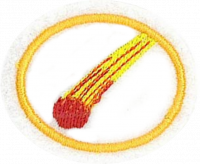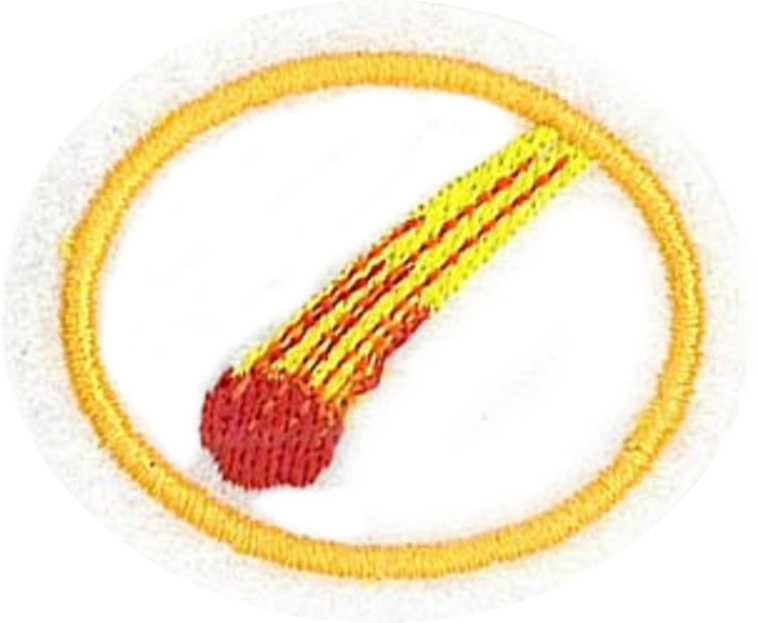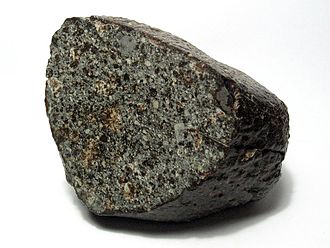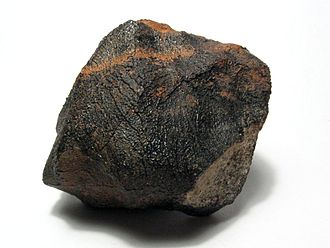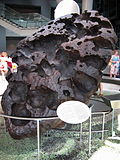Difference between revisions of "AY Honors/Meteorites/Answer Key 2"
m |
m (- Category of AYHAB) |
||
| (13 intermediate revisions by 3 users not shown) | |||
| Line 1: | Line 1: | ||
| − | < | + | {{HonorSubpage}} |
| − | <noinclude><translate><!--T: | + | {{#vardefine:reqpage|{{#titleparts:{{PAGENAME}}|2}}/Requirements 2}} |
| + | |||
| + | <!--{{Honor_Master|honor=Meteorites|master=Naturalist|group=Flora}}--> | ||
| + | <section begin="Body" /> | ||
| + | {{ansreq|page={{#var:reqpage}}|num=1}} | ||
| + | <noinclude><translate><!--T:36--> | ||
</noinclude> | </noinclude> | ||
| − | + | <!-- 1. Have the Rocks and Minerals honor. --> | |
| − | <!-- | ||
| − | |||
| − | |||
| − | |||
| − | |||
| − | |||
| − | |||
| − | |||
| − | |||
| − | |||
| − | |||
| − | |||
| − | |||
| − | |||
| − | |||
| − | |||
| − | |||
| − | |||
{{honor_prerequisite|category=Nature|honor=Rocks & Minerals}} | {{honor_prerequisite|category=Nature|honor=Rocks & Minerals}} | ||
| − | ==2. What is a meteorite? | + | <!--T:37--> |
| + | <noinclude></translate></noinclude> | ||
| + | {{CloseReq}} <!-- 1 --> | ||
| + | {{ansreq|page={{#var:reqpage}}|num=2}} | ||
| + | <noinclude><translate><!--T:38--> | ||
| + | </noinclude> | ||
| + | <!-- 2. What is a meteorite? --> | ||
A meteorite is a solid piece of debris from asteroids or comets originating in outer space that survives impact with the Earth's atmosphere and surface. A meteorite's size can range from a small pebble to extremely large. When a meteoroid enters the atmosphere, frictional, pressure, and chemical interactions with the atmospheric gases cause the body to heat up, and emit light, thus forming a fireball, also known as a meteor or shooting or falling star. | A meteorite is a solid piece of debris from asteroids or comets originating in outer space that survives impact with the Earth's atmosphere and surface. A meteorite's size can range from a small pebble to extremely large. When a meteoroid enters the atmosphere, frictional, pressure, and chemical interactions with the atmospheric gases cause the body to heat up, and emit light, thus forming a fireball, also known as a meteor or shooting or falling star. | ||
| − | ==3. Explain the difference between a meteorite fall and a find. | + | <!--T:39--> |
| + | <noinclude></translate></noinclude> | ||
| + | {{CloseReq}} <!-- 2 --> | ||
| + | {{ansreq|page={{#var:reqpage}}|num=3}} | ||
| + | <noinclude><translate><!--T:40--> | ||
| + | </noinclude> | ||
| + | <!-- 3. Explain the difference between a meteorite fall and a find. --> | ||
Meteorites that are recovered after being observed as they transited the atmosphere or impacted the Earth are called falls. All other meteorites are known as finds. | Meteorites that are recovered after being observed as they transited the atmosphere or impacted the Earth are called falls. All other meteorites are known as finds. | ||
| − | ==4. Explain how meteorites are named. | + | <!--T:41--> |
| + | <noinclude></translate></noinclude> | ||
| + | {{CloseReq}} <!-- 3 --> | ||
| + | {{ansreq|page={{#var:reqpage}}|num=4}} | ||
| + | <noinclude><translate><!--T:42--> | ||
| + | </noinclude> | ||
| + | <!-- 4. Explain how meteorites are named. --> | ||
Meteorites are usually named by the finder(s) for the places they were found, usually a nearby town or geographic feature. In cases where many meteorites were found in one place, the name may be followed by a number or letter. | Meteorites are usually named by the finder(s) for the places they were found, usually a nearby town or geographic feature. In cases where many meteorites were found in one place, the name may be followed by a number or letter. | ||
| − | ==5. Describe a hypervelocity crater. | + | <!--T:43--> |
| + | <noinclude></translate></noinclude> | ||
| + | {{CloseReq}} <!-- 4 --> | ||
| + | {{ansreq|page={{#var:reqpage}}|num=5}} | ||
| + | <noinclude><translate><!--T:44--> | ||
| + | </noinclude> | ||
| + | <!-- 5. Describe a hypervelocity crater. --> | ||
A hypervelocity crater is an approximately circular depression on the surface of a planet, moon or other solid body in the Solar System, formed by the high velocity impact of a smaller body with the surface. | A hypervelocity crater is an approximately circular depression on the surface of a planet, moon or other solid body in the Solar System, formed by the high velocity impact of a smaller body with the surface. | ||
| Line 38: | Line 49: | ||
Large meteoroids may strike the ground with a significant velocity, leaving behind a hypervelocity impact crater. The size of the crater will depend on the composition, degree of fragmentation, and the incoming angle of the meteorite impact. The force of such collisions has the potential to cause widespread destruction. The most frequent hypervelocity cratering events on the Earth are caused by iron meteoroids, which are most easily able to transit the atmosphere intact. Examples of craters caused by iron meteoroids include Barringer Meteor Crater, Odessa Meteor Crater, Wabar craters, and Wolfe Creek crater. | Large meteoroids may strike the ground with a significant velocity, leaving behind a hypervelocity impact crater. The size of the crater will depend on the composition, degree of fragmentation, and the incoming angle of the meteorite impact. The force of such collisions has the potential to cause widespread destruction. The most frequent hypervelocity cratering events on the Earth are caused by iron meteoroids, which are most easily able to transit the atmosphere intact. Examples of craters caused by iron meteoroids include Barringer Meteor Crater, Odessa Meteor Crater, Wabar craters, and Wolfe Creek crater. | ||
| − | ==6. Identify from images, draw, or photograph the following types of Meteorites. Describe the common shape, size, composition, and method of formation of each type of meteorite. | + | <!--T:45--> |
| + | <noinclude></translate></noinclude> | ||
| + | {{CloseReq}} <!-- 5 --> | ||
| + | {{ansreq|page={{#var:reqpage}}|num=6}} | ||
| + | <noinclude><translate><!--T:46--> | ||
| + | </noinclude> | ||
| + | <!-- 6. Identify from images, draw, or photograph the following types of Meteorites. Describe the common shape, size, composition, and method of formation of each type of meteorite. --> | ||
| − | == | + | <!--T:47--> |
| + | <noinclude></translate></noinclude> | ||
| + | {{ansreq|page={{#var:reqpage}}|num=6a}} <!--T:9--> | ||
| + | <noinclude><translate><!--T:48--> | ||
| + | </noinclude> | ||
[[File:NWA869Meteorite.jpg|thumb|300px|Chondrite]] | [[File:NWA869Meteorite.jpg|thumb|300px|Chondrite]] | ||
[[File:MillbillillieMeteorite.jpg|thumb|MillbillillieMeteorite|thumb|300px|An eucrite achondrite from the Millbillillie meteorite shower.]] | [[File:MillbillillieMeteorite.jpg|thumb|MillbillillieMeteorite|thumb|300px|An eucrite achondrite from the Millbillillie meteorite shower.]] | ||
| Line 51: | Line 72: | ||
{{clear}} | {{clear}} | ||
| − | + | <!--T:49--> | |
| + | <noinclude></translate></noinclude> | ||
| + | {{CloseReq}} <!-- 6a --> | ||
| + | {{ansreq|page={{#var:reqpage}}|num=6b}} <!--T:10--> | ||
| + | <noinclude><translate><!--T:50--> | ||
| + | </noinclude> | ||
<!--T:31--> | <!--T:31--> | ||
| Line 57: | Line 83: | ||
{{clear}} | {{clear}} | ||
| − | == | + | <!--T:51--> |
| + | <noinclude></translate></noinclude> | ||
| + | {{CloseReq}} <!-- 6b --> | ||
| + | {{ansreq|page={{#var:reqpage}}|num=6c}} <!--T:11--> | ||
| + | <noinclude><translate><!--T:52--> | ||
| + | </noinclude> | ||
[[File:TamentitMeteorite.JPG|thumb|TamentitMeteorite|thum300px|Tamentit Iron Meteorite, found in 1864 in the Sahara Desert, weight about 500 kg. On display at Vulcania park in France.]] | [[File:TamentitMeteorite.JPG|thumb|TamentitMeteorite|thum300px|Tamentit Iron Meteorite, found in 1864 in the Sahara Desert, weight about 500 kg. On display at Vulcania park in France.]] | ||
About 5% of meteorites that fall are iron meteorites with intergrowths of iron-nickel alloys, such as kamacite and taenite. | About 5% of meteorites that fall are iron meteorites with intergrowths of iron-nickel alloys, such as kamacite and taenite. | ||
| Line 64: | Line 95: | ||
Iron meteorites are generally thought to come from the core of asteroids and planetoids. | Iron meteorites are generally thought to come from the core of asteroids and planetoids. | ||
| − | ==7. Identify and classify three notable meteorites, including one found in your country. These may include such named meteorites as Hoba, Willamette, and Allende. What makes each of your chosen meteorites notable? | + | <!--T:53--> |
| + | <noinclude></translate></noinclude> | ||
| + | {{CloseReq}} <!-- 6c --> | ||
| + | {{CloseReq}} <!-- 6 --> | ||
| + | {{ansreq|page={{#var:reqpage}}|num=7}} | ||
| + | <noinclude><translate><!--T:54--> | ||
| + | </noinclude> | ||
| + | <!-- 7. Identify and classify three notable meteorites, including one found in your country. These may include such named meteorites as Hoba, Willamette, and Allende. What makes each of your chosen meteorites notable? --> | ||
<gallery> | <gallery> | ||
File:Hoba_Meteorite_sire.jpg|Hoba – The largest known meteorite in the world. | File:Hoba_Meteorite_sire.jpg|Hoba – The largest known meteorite in the world. | ||
| Line 72: | Line 110: | ||
{{clear}} | {{clear}} | ||
| − | ==8. Identify 7 Bible mentions of a meteorite or fiery rock falling from heaven (“stars,” “large stone,” “hailstone” and “brimstone” are common Biblical terms for meteorites). Discuss or describe why you think the Bible mentions meteorites. | + | <!--T:55--> |
| + | <noinclude></translate></noinclude> | ||
| + | {{CloseReq}} <!-- 7 --> | ||
| + | {{ansreq|page={{#var:reqpage}}|num=8}} | ||
| + | <noinclude><translate><!--T:56--> | ||
| + | </noinclude> | ||
| + | <!-- 8. Identify 7 Bible mentions of a meteorite or fiery rock falling from heaven (“stars,” “large stone,” “hailstone” and “brimstone” are common Biblical terms for meteorites). Discuss or describe why you think the Bible mentions meteorites. --> | ||
{{Bible verse | {{Bible verse | ||
|book=Revelation | |book=Revelation | ||
| Line 176: | Line 220: | ||
}} | }} | ||
| − | + | <!--T:57--> | |
| − | {{ | + | <noinclude></translate></noinclude> |
| + | {{CloseReq}} <!-- 8 --> | ||
| + | {{ansreq|page={{#var:reqpage}}|num=9}} | ||
| + | <noinclude><translate><!--T:58--> | ||
| + | </noinclude> | ||
| + | <!-- 9. Do two of the following: --> | ||
| − | == | + | <!--T:59--> |
| − | + | <noinclude></translate></noinclude> | |
| − | + | {{ansreq|page={{#var:reqpage}}|num=9a}} <!--T:23--> | |
| − | + | <noinclude><translate><!--T:60--> | |
| + | </noinclude> | ||
| + | <noinclude></translate></noinclude> | ||
| + | {{CloseReq}} <!-- 9a --> | ||
| + | {{ansreq|page={{#var:reqpage}}|num=9b}} | ||
| + | <noinclude><translate><!--T:61--> | ||
| + | </noinclude> | ||
| + | <!--T:62--> | ||
| + | <noinclude></translate></noinclude> | ||
| + | {{CloseReq}} <!-- 9b --> | ||
| + | {{ansreq|page={{#var:reqpage}}|num=9c}} | ||
| + | <noinclude><translate><!--T:63--> | ||
| + | </noinclude> | ||
| + | <noinclude></translate></noinclude> | ||
| + | {{CloseReq}} <!-- 9c --> | ||
| + | {{ansreq|page={{#var:reqpage}}|num=9d}} | ||
| + | <noinclude><translate><!--T:64--> | ||
| + | </noinclude> | ||
| + | |||
| + | <!--T:65--> | ||
| + | <noinclude></translate></noinclude> | ||
| + | {{CloseReq}} <!-- 9d --> | ||
| + | {{CloseReq}} <!-- 9 --> | ||
| + | <noinclude><translate></noinclude> | ||
==References== <!--T:34--> | ==References== <!--T:34--> | ||
| − | |||
| − | |||
| − | |||
<noinclude></translate></noinclude> | <noinclude></translate></noinclude> | ||
| + | {{CloseHonorPage}} | ||
Latest revision as of 00:20, 19 July 2022
1
For tips and instruction see Rocks & Minerals.
2
A meteorite is a solid piece of debris from asteroids or comets originating in outer space that survives impact with the Earth's atmosphere and surface. A meteorite's size can range from a small pebble to extremely large. When a meteoroid enters the atmosphere, frictional, pressure, and chemical interactions with the atmospheric gases cause the body to heat up, and emit light, thus forming a fireball, also known as a meteor or shooting or falling star.
3
Meteorites that are recovered after being observed as they transited the atmosphere or impacted the Earth are called falls. All other meteorites are known as finds.
4
Meteorites are usually named by the finder(s) for the places they were found, usually a nearby town or geographic feature. In cases where many meteorites were found in one place, the name may be followed by a number or letter.
5
A hypervelocity crater is an approximately circular depression on the surface of a planet, moon or other solid body in the Solar System, formed by the high velocity impact of a smaller body with the surface.
Large meteoroids may strike the ground with a significant velocity, leaving behind a hypervelocity impact crater. The size of the crater will depend on the composition, degree of fragmentation, and the incoming angle of the meteorite impact. The force of such collisions has the potential to cause widespread destruction. The most frequent hypervelocity cratering events on the Earth are caused by iron meteoroids, which are most easily able to transit the atmosphere intact. Examples of craters caused by iron meteoroids include Barringer Meteor Crater, Odessa Meteor Crater, Wabar craters, and Wolfe Creek crater.
6
6a
Most meteorites are stony meteorites, classed as chondrites and achondrites. About 87% of the meteorites that fall on Earth are chondrites, which are named for the small, round particles they contain. These particles, or chondrules, are composed mostly of silicate minerals that appear to have been melted while they were free-floating objects in space.
Stony Chondrite meteorites are thought to originate in the asteroid belt, whereas Stony Achondrite meteorites are thought to be the result of material released from collisions of the outer crust of asteroids (or other planets and planetoids).
6b
Stony-Iron meteorites likely come from the boundary area between crust and core.
6c
About 5% of meteorites that fall are iron meteorites with intergrowths of iron-nickel alloys, such as kamacite and taenite.
Iron meteorites are generally thought to come from the core of asteroids and planetoids.
7
8
And the stars in the sky fell to earth, as late figs drop from a fig tree by a strong wind.
And a great star, blazing like a torch, fell from the sky.
From the sky huge hailstones of about a hundred pounds each fell upon men.
And something like a huge mountain, all ablaze, was thrown into the sea.
5. The fifth angel sounded his trumpet, and I saw a star that had fallen from the sky to the earth.
The stars will fall from the sky, and the heavenly bodies will be shaken.
The Lord hurled large hailstones down on them from the sky.
His tail swept a third of the stars out of the sky and flung them to earth.
Then a mighty angel picked up a boulder the size of a large millstone and threw it into the sea.
The stars will fall from the sky, and the heavenly bodies will be shaken.
While you were watching, a rock was cut out, but not by human hands. It struck the statue on its feet of iron and clay and smashed them.
Then the LORD rained upon Sodom and upon Gomorrah brimstone and fire from the LORD out of heaven.
9
9a
9b
9c
9d
